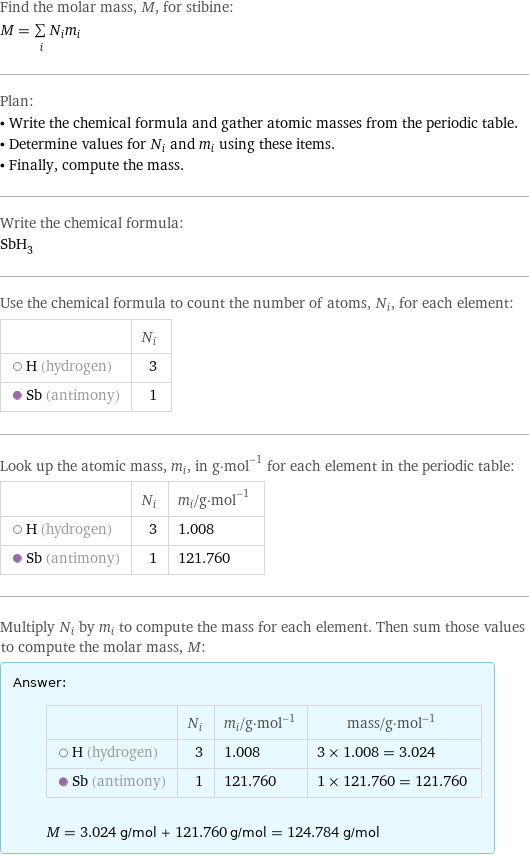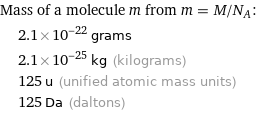Input interpretation

stibine | molar mass
Result

Find the molar mass, M, for stibine: M = sum _iN_im_i Plan: • Write the chemical formula and gather atomic masses from the periodic table. • Determine values for N_i and m_i using these items. • Finally, compute the mass. Write the chemical formula: SbH_3 Use the chemical formula to count the number of atoms, N_i, for each element: | N_i H (hydrogen) | 3 Sb (antimony) | 1 Look up the atomic mass, m_i, in g·mol^(-1) for each element in the periodic table: | N_i | m_i/g·mol^(-1) H (hydrogen) | 3 | 1.008 Sb (antimony) | 1 | 121.760 Multiply N_i by m_i to compute the mass for each element. Then sum those values to compute the molar mass, M: Answer: | | | N_i | m_i/g·mol^(-1) | mass/g·mol^(-1) H (hydrogen) | 3 | 1.008 | 3 × 1.008 = 3.024 Sb (antimony) | 1 | 121.760 | 1 × 121.760 = 121.760 M = 3.024 g/mol + 121.760 g/mol = 124.784 g/mol
Unit conversion

0.12478 kg/mol (kilograms per mole)
Comparisons

≈ ( 0.17 ≈ 1/6 ) × molar mass of fullerene ( ≈ 721 g/mol )

≈ 0.64 × molar mass of caffeine ( ≈ 194 g/mol )

≈ 2.1 × molar mass of sodium chloride ( ≈ 58 g/mol )
Corresponding quantities

Mass of a molecule m from m = M/N_A: | 2.1×10^-22 grams | 2.1×10^-25 kg (kilograms) | 125 u (unified atomic mass units) | 125 Da (daltons)

Relative molecular mass M_r from M_r = M_u/M: | 125